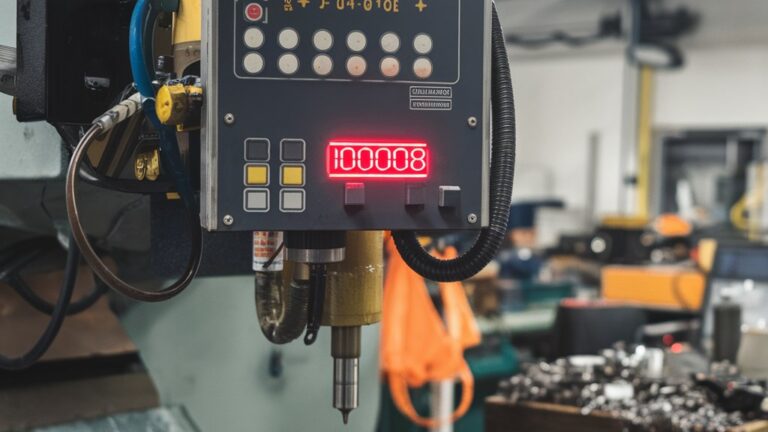The IO0008 alarm on Speedio milling machines is a common issue faced by operators and technicians. This alarm typically indicates a problem with the input/output (I/O) system of the machine, which can affect its performance and efficiency. Properly addressing this alarm is crucial for maintaining the smooth operation of your milling machine and ensuring high-quality output.
What is the IO0008 Alarm?
The IO0008 alarm is a specific error code that appears on the control panel of Speedio milling machines, indicating an issue with the machine’s input/output operations. This alarm often points to problems related to the communication between various components of the machine, including sensors, switches, and the central processing unit (CPU). Understanding the root causes of this alarm is essential for effective troubleshooting and resolution.
Common Causes of the IO0008 Alarm
Several factors can trigger the IO0008 alarm on a Speedio milling machine. Identifying the underlying cause is the first step in resolving the issue. Common causes include:
- Faulty Wiring: Loose or damaged wiring connections can interrupt the communication between the machine’s components, triggering the IO0008 alarm.
- Sensor Issues: Malfunctioning sensors or switches can send incorrect signals to the machine’s control system, leading to the alarm.
- Software Glitches: Outdated or corrupted software can cause communication errors, resulting in the IO0008 alarm.
- Hardware Failures: Defective hardware components, such as the CPU or I/O boards, can lead to this alarm.
- Interference: Electrical or electromagnetic interference from external sources can disrupt the machine’s normal operation.
Step-by-Step Troubleshooting Guide
1 – Check Wiring Connections
- Visual Inspection: Start by visually inspecting all wiring connections related to the I/O system. Look for loose, frayed, or damaged wires.
- Secure Connections: Ensure that all connectors are securely attached and that there are no signs of corrosion or wear.
2 – Inspect Sensors and Switches
- Test Sensors: Verify the functionality of sensors and switches by using a multimeter to check their output signals.
- Clean Components: If sensors or switches are dirty, clean them carefully to ensure accurate readings.
3 – Update or Reinstall Software
- Check for Updates: Verify if there are any software updates available for your Speedio milling machine. Manufacturers often release updates to fix known issues.
- Reinstall Software: If the problem persists, consider reinstalling the software to eliminate any potential corruption.
4 – Examine Hardware Components
- Test CPU and I/O Boards: Use diagnostic tools to test the functionality of the CPU and I/O boards. Replace any defective components as needed.
- Consult the Manual: Refer to the machine’s service manual for detailed instructions on testing and replacing hardware components.
5 – Eliminate Interference
- Check for External Sources: Identify and eliminate any potential sources of electrical or electromagnetic interference near the milling machine.
- Shielding: Use shielding materials if necessary to protect the machine from external disturbances.
Preventative Measures
To reduce the likelihood of encountering the IO0008 alarm in the future, consider implementing the following preventative measures:
- Regular Maintenance: Perform routine maintenance on your milling machine to ensure that all components are functioning correctly.
- Routine Inspections: Regularly inspect wiring, sensors, and switches for signs of wear or damage.
- Software Updates: Keep the machine’s software up-to-date to benefit from the latest fixes and improvements.
- Training: Ensure that operators and technicians are well-trained in troubleshooting and maintaining the machine.
FAQs
1. What is the IO0008 alarm on a Speedio milling machine?
The IO0008 alarm indicates a problem with the machine’s input/output system, often related to wiring, sensors, or software issues.
2. How can I reset the IO0008 alarm?
Resetting the alarm may involve correcting the underlying issue, such as repairing wiring or updating software, and then restarting the machine.
3. Can a faulty sensor cause the IO0008 alarm?
Yes, malfunctioning sensors can send incorrect signals, leading to the IO0008 alarm.
4. What should I check first when troubleshooting the IO0008 alarm?
Start by inspecting wiring connections and ensuring that they are secure and undamaged.
5. How do I update the software on my Speedio milling machine?
Check the manufacturer’s website for software updates and follow the provided instructions for installation.
6. What tools are needed for troubleshooting the IO0008 alarm?
Tools such as a multimeter, diagnostic software, and a screwdriver set are commonly used for troubleshooting.
7. How often should I perform maintenance on my milling machine?
Regular maintenance should be performed according to the manufacturer’s recommendations, typically on a monthly or quarterly basis.
8. Can external interference affect the milling machine’s operation?
Yes, electrical or electromagnetic interference can disrupt the machine’s normal operation and trigger alarms.
Conclusion
The IO0008 alarm on Speedio milling machines can be a challenging issue, but with a systematic approach to troubleshooting, you can effectively address and resolve the problem. By checking wiring, inspecting sensors, updating software, and examining hardware, you can ensure that your machine operates smoothly and efficiently. Implementing regular maintenance and preventative measures will also help minimize the risk of future alarms. Understanding and addressing the IO0008 alarm not only improves machine performance but also contributes to overall operational efficiency.
